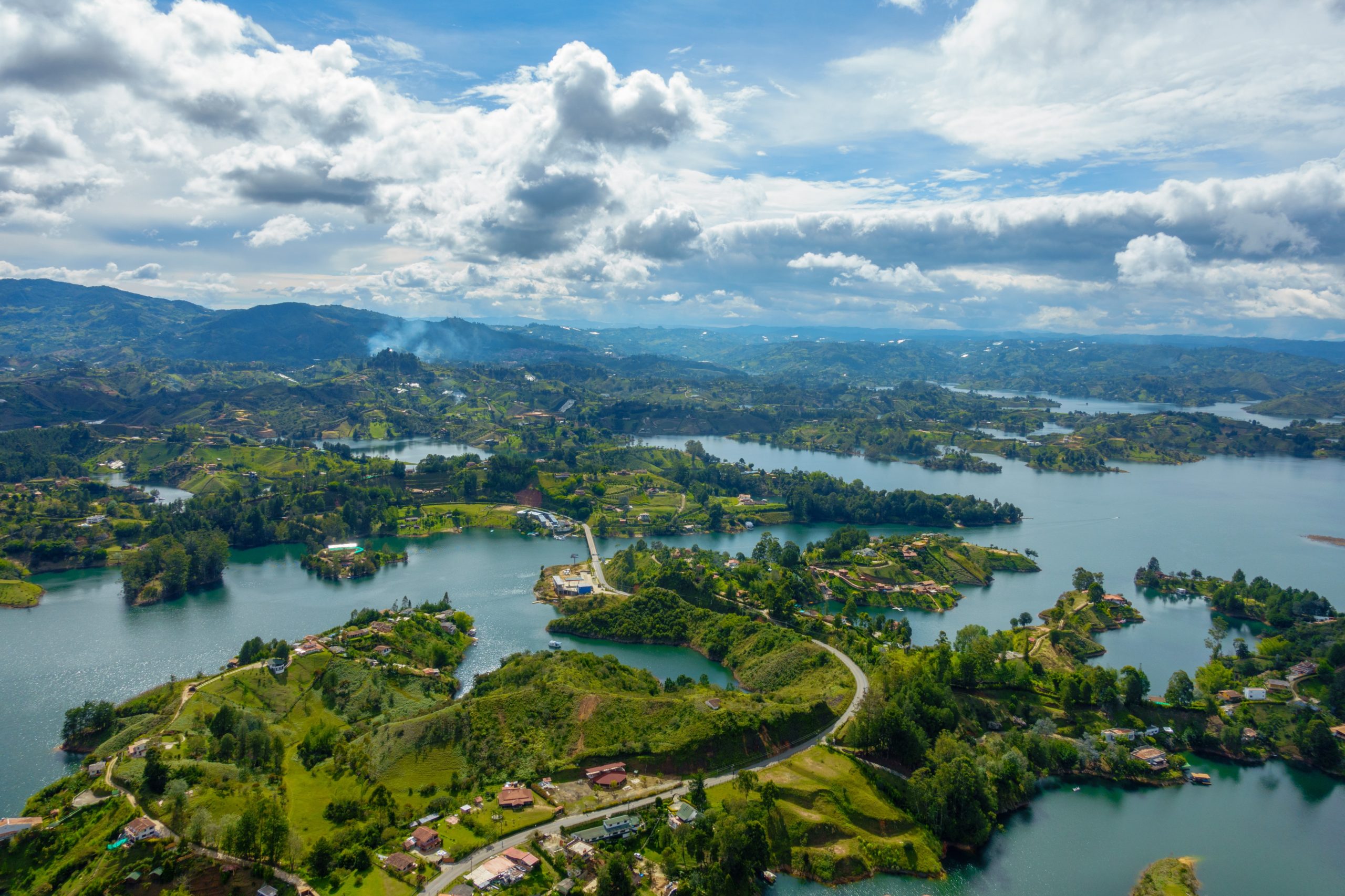This is our Colombian coffee guide.
In this article, you will learn about Colombian coffee history, cultivation features, and the most famous varieties grown.
Let's get started.
History of Colombian Coffee

It is believed that coffee was introduced to Colombia by Jesuit monks. In the 18th century, Arabica coffee plantations were located on the territory of what is now Colombia.
At first, as in many Central American countries, coffee was grown in Colombia only for domestic consumption. A little later, Colombian farmers began to understand that the high-quality coffee would be perfect for trading.
Colombian coffee was first grown commercially in the 19th century. In the early 20th century, coffee became Colombia's main export commodity. Gradually, Colombia became the second largest Arabica coffee producer in the world. Colombian coffee has won worldwide recognition and is now at the peak of popularity among connoisseurs due to its quality and good taste.
Colombia's National Federation of Coffee Growers was founded in 1927 and the Federation of Colombian Coffee Producers' Trade Unions was founded at the same time.
In the 1960s, Colombians significantly refined and changed coffee processing to increase the yield of coffee plantations and develop varieties that are resistant to diseases.
Today, coffee production in Colombia employs almost half of the country's population.
In 2020, Colombia ranked 3rd in terms of coffee production, after Brazil and Vietnam. It ranks 2nd in the world for the production of Arabica coffees.
Colombia Coffee Production
Colombia is a state in northwest Latin America. It borders Panama, Brazil, Venezuela, Ecuador, and Peru. Its climate and weather conditions are perfect for the cultivation of high-quality coffee.
Only Arabica beans are grown in the country. Colombian coffee beans are known around the world for their quality and excellent taste, which are explained by Colombia's ideal climatic conditions and soil composition.
The most significant coffee plantations in Colombia are located in the so-called Coffee Triangle or Colombia's Coffee Cultural Landscape. This area is located across three departments: Caldas, Quindio, Risaralda. These coffee-growing regions are among the smallest in Colombia. Since 2011, these territories have been included on the UNESCO World Heritage List.
On traditional plantations, coffee seedlings were planted with a few tall trees that provided shade and allowed the coffee to ripen slowly and evenly. But the planting of coffee trees turned out to be sparse, and the harvest was not large. Such plantations were gradually replaced by more modern ones that feature a high planting density, which has made it possible to increase the volume of the harvest. Gradually, the number of plantations increased while the size of the plantations themselves became smaller.
All premium green coffee is sold as specialty coffee. Lower-quality green coffee is used to make coffee blends. In blends, green coffee is harvested from different plantations.
Most Colombian coffee is purchased by instant coffee producers. Colombian instant coffee is well known to many and is considered one of the best, even though the distinctive features of Colombian coffee are lost when it's used as instant coffee rather than for normal brewing.
The main advantages of Colombian coffee are its refined and delicate aroma, well-balanced taste, medium density, moderate acidity, and fruity and nutty notes.
Climate and soil composition play a significant role in the quality of Colombian coffee beans. Nature has created a unique balance of heat, moisture, and trace elements. The research of scientists and the work of coffee breeders contribute to continuing improvements in taste.
Key features of Colombian coffee production:
1
Plantations are located in high mountain areas at least 3,900 feet (1,200 meters) above sea level. Coffee trees grow in the shade of taller plants that protect them from excess sunlight.
2
Coffee berries are harvested and sorted by hand.
3
Coffee berries are wet-processed. They are kept in running water for about a day. During this time, partial fermentation takes place, releasing aromatic substances.
4
Coffee growers in Colombia classify beans not only by variety but also by size.
5
Compliance with technology is strictly controlled by the National Federation of Coffee Growers.
6
Colombia has been breeding only Arabica for centuries despite its cultivation complexities.
7
Most plantations are family-owned. The tradition of growing coffee beans has been passed down through the generations. Colombian coffee farmers value family reputation and don't chase profits.
Colombian Coffee Varieties
Only Arabica is grown in Colombia, though several varieties are cultivated.
These are the most famous varieties of the best coffee beans in Colombia:
Typica
Typica is one of the oldest Arabica varieties and is considered the progenitor of modern species. Today, this variety is not often grown, due to its insufficiently high yield. This Arabica variety is prized for its classic coffee flavor with light nutty notes.
Colombian
Colombian is a world-famous variety of Colombian Arabica beans. It's characterized by a cocoa aroma and a fruity flavor.
Castillo
Castillo is the result of a long selection process. This variety is resistant to the diseases that Arabica often suffers from. The coffee has a very delicate taste with a slightly nutty flavor.
Caturra
Caturra is a high-yield Bourbon hybrid. Acidity prevails over sweetness, and the variety has a unique caramel flavor.
Cenicafé 1
Cenicafé 1 is the latest coffee variety developed by the National Federation of Coffee Growers and the National Coffee Research Center. Cenicafé 1 is the result of a cross between Caturra and a Timor 1343 hybrid. This variety is resistant not only to coffee rust but also to coffee berry disease, a fungal disease affecting coffee berries.
Tabi
Tabi is the result of a cross between Timor, Bourbon, and Typica. From Timor, it inherited resistance to coffee rust, and from Typica and Bourbon it inherited a good taste.
Colombian coffee beans are classified according to the size the beans:
- Supremo — the largest beans produced in Colombia;
- Excelso — medium size;
- Usually Good Quality — small beans no more than 5.5 mm in size.
